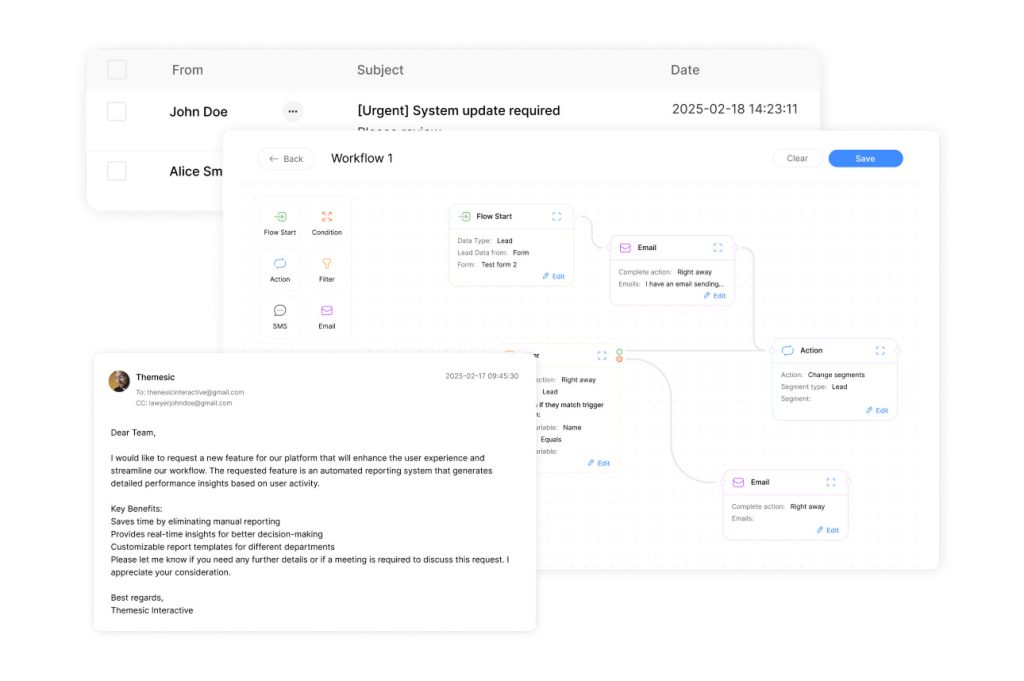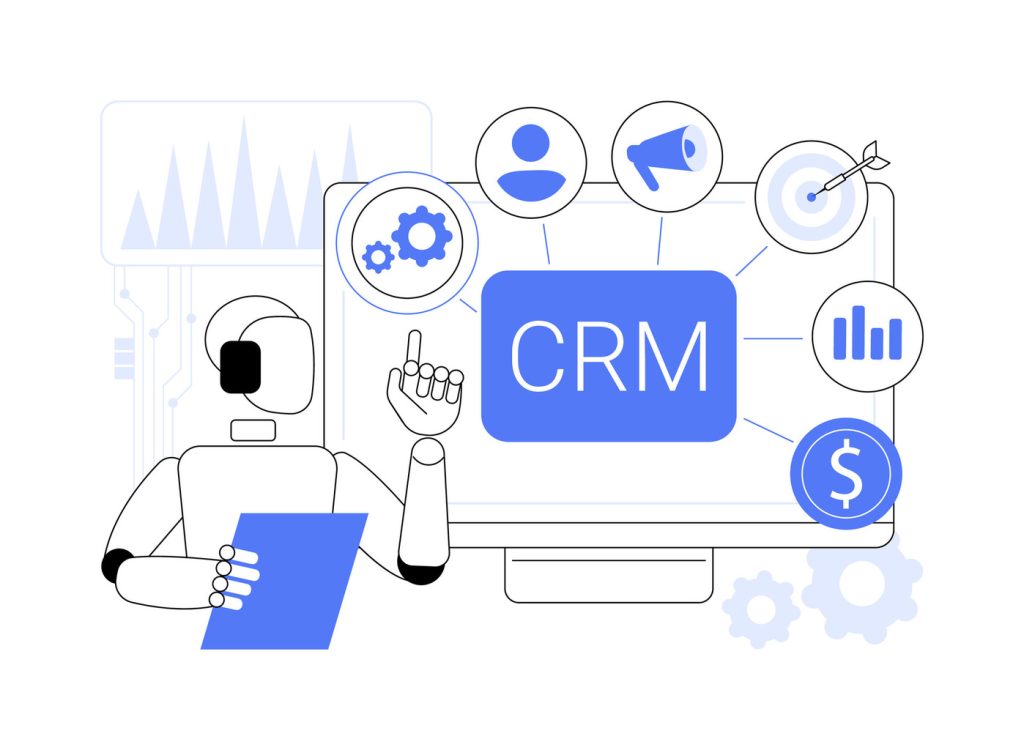Top Workflow Automation Tools for Business Efficiency

Over 94% of professionals waste hours daily on manual data entry and repetitive tasks, draining productivity and morale, according to recent industry studies. These inefficiencies cost companies thousands in lost productivity and human error. Modern solutions now empower teams to eliminate bottlenecks, freeing them to focus on growth-driven strategies.
Advanced systems replace outdated processes with intelligent, self-operating frameworks. This shift allows organizations to reduce operational costs while maintaining quality standards. Teams using these methods report measurable improvements in accuracy and output, even during rapid scaling.
Forward-thinking leaders prioritize technologies that streamline cross-departmental collaboration. By minimizing manual interventions, businesses achieve faster turnaround times and higher customer satisfaction rates. The result? A competitive edge in today’s fast-paced markets.
Key Takeaways
- 94% of professionals waste time on repetitive tasks that hinder productivity
- Intelligent systems reduce errors and operational costs significantly
- Automated frameworks enable teams to prioritize strategic growth initiatives
- Scalable solutions maintain quality during rapid business expansion
- Cross-department efficiency gains improve customer response times
Introduction to Workflow Automation in Business

Time-consuming administrative work stifles innovation in 89% of organizations, according to recent operational efficiency reports. Digital tools now redefine how companies manage repetitive tasks through rule-based software solutions. These systems execute predefined actions, replacing manual efforts with precision-driven operations.
Businesses adopting these technologies see immediate improvements. Error rates drop by up to 67% in data-heavy departments like finance and logistics. Teams reclaim hours previously lost to routine duties, redirecting energy toward strategic initiatives that drive revenue growth.
| Manual Processes | Automated Systems | Improvement |
|---|---|---|
| 45 minutes per report | 8 minutes per report | 82% faster |
| 12% error rate | 1.5% error rate | 88% reduction |
| 3-hour approval cycles | 20-minute approvals | 90% time saved |
Cross-departmental integration stands out as a key advantage. Marketing teams automatically sync lead data with CRM platforms. HR departments streamline onboarding checklists without manual oversight. This cohesion eliminates information silos that traditionally slow decision-making.
Leaders prioritizing these solutions achieve measurable cost reductions. One logistics firm cut invoice processing costs by $14,000 monthly after implementation. Another tech company reduced customer service response times from 24 hours to 45 minutes.
Understanding How Workflow Automation Works
Modern businesses face dynamic challenges requiring adaptable solutions. Intelligent process systems use conditional rules to manage operational sequences without constant oversight. These frameworks analyze specific triggers – like customer actions or data updates – to initiate predefined responses.
Conditional Rules and Event-Driven Operations
At their core, these systems operate through “when X happens, do Y” principles. A customer completing an online form might activate three simultaneous actions: lead database entry, personalized email delivery, and sales team notifications. This approach eliminates manual handoffs between departments.
| Trigger Event | Immediate Action | Resulting Outcome |
|---|---|---|
| Form submission | CRM record creation | Lead profile established |
| Meeting scheduled | Calendar invites sent | 97% attendance rate |
| Payment received | Invoice archiving + receipt | 48-hour process completion |
Practical Implementation Scenarios
Consider a tech company managing client onboarding. New signups automatically receive documentation, access credentials, and support contacts. Sales teams get real-time alerts to schedule orientation calls. This method reduces onboarding time from 5 days to 8 hours.
Retailers use similar logic for inventory management. Stock level thresholds trigger purchase orders and supplier alerts. This prevents stockouts while maintaining lean inventory budgets. One e-commerce brand reduced excess inventory costs by $220,000 annually using these protocols.
Key Benefits of Automation in Business Processes

Companies implementing intelligent process systems report transformative outcomes across departments. Employees gain 40% more time for strategic work by offloading repetitive tasks to digital tools. This shift boosts job satisfaction as teams focus on creative problem-solving rather than data entry.
Customer experiences improve through consistent, personalized interactions managed by rule-based platforms. For example, integrated systems like ClearCRM automatically update client records and trigger follow-up actions. Service teams resolve issues faster, with 78% of users reporting stronger brand loyalty.
Cross-department transparency increases when automated alerts share real-time updates. Marketing and sales teams sync campaign metrics with lead conversion data effortlessly. Finance departments access accurate reports within minutes instead of days.
Error-prone manual tasks become relics of the past. Systems processing invoices or inventory updates achieve 99.2% accuracy rates, compared to 85% with human execution. Parallel task management lets organizations handle customer onboarding while simultaneously updating supply chain databases.
Predictive analytics transform planning processes. Historical sales patterns and market trends feed into algorithms that forecast demand with 92% reliability. Leaders allocate resources confidently, knowing projections align with actual operational needs.
Overview of Leading Workflow Automation Tools
Business leaders now choose from diverse platforms that transform how teams operate. Enterprise solutions like HubSpot centralize operations through 50+ app integrations, while specialized options like Sender optimize email campaigns. These systems address specific needs without requiring technical expertise.
All-in-one platforms excel at connecting departments. Nintex serves 8,000+ enterprises with complex process management, reducing approval cycles by 83%. Zapier bridges 1,000+ apps, letting teams create custom connections between marketing tools and CRMs.
Niche solutions solve targeted challenges. Jotform automates form-based approvals, cutting processing time from days to hours. Bardeen.ai uses artificial intelligence to handle repetitive browser tasks, saving users 11 hours weekly.
Scalability remains critical. Kissflow offers intuitive builders for small teams, whereas ClickUp manages large-scale projects across global offices. One healthcare provider streamlined patient onboarding using these tools, reducing manual errors by 94%.
Proven results drive adoption. Platforms like Zapier and HubSpot power over 4 million businesses worldwide. Their user-friendly designs ensure smooth transitions from manual processes to optimized systems.
Exploring Top Workflow Automation Solutions for Enhanced Productivity

Businesses face critical choices when selecting digital systems to optimize operations. The market offers solutions ranging from entry-level platforms to enterprise-grade powerhouses, each with distinct strengths. Pricing models reflect this diversity – from free tiers supporting startups to premium packages handling complex organizational needs.
Matching Features to Budget Requirements
Cost-effective options like ClickUp ($5/month) provide core functionality for task management, while Nintex ($910+/month) delivers advanced process design capabilities. HubSpot’s $3,200 enterprise plan includes predictive analytics and custom reporting tools. Mid-range platforms like Sender balance affordability ($10-$35/month) with robust email campaign features.
Implementation costs extend beyond subscriptions. Training time and system customization impact total investment. A retail chain saved $38,000 annually after calculating these factors during platform selection.
Connecting Systems and Solving Challenges
Integration capacity separates basic tools from game-changers. Zapier links 1,000+ apps for cross-platform data flow, while Kissflow focuses on essential business software connections. Unique applications emerge across industries:
- Healthcare networks automate patient intake forms with Jotform
- Manufacturers use AI-driven platforms like Bardeen.ai for supply chain alerts
- Financial firms deploy Nintex for compliance documentation
Scalability proves vital as businesses grow. Leading solutions offer modular upgrades – teams start with basic features then add advanced modules as needs evolve. This flexibility prevents costly platform migrations during expansion phases.
Workflow Automation in Marketing Processes
Marketing teams using intelligent systems achieve 73% faster campaign deployment compared to manual methods. These tools execute multi-channel strategies by linking customer actions to predefined responses. A resource download might trigger three actions: email enrollment, CRM updates, and sales alerts.
Personalized email sequences convert casual visitors into loyal customers. Systems deliver targeted content based on browsing history or purchase patterns. One retailer increased repeat sales by 41% using behavioral triggers in their campaigns.
| Manual Marketing | System-Driven Approach | Improvement |
|---|---|---|
| 18% cart recovery rate | 63% recovery rate | 3.5x effectiveness |
| 4-hour social media setup | 15-minute scheduling | 94% time saved |
| Manual lead sorting | AI-driven segmentation | 89% accuracy boost |
Social media management becomes strategic rather than administrative. Platforms automatically post content during peak engagement windows identified through historical data. Teams focus on crafting messages instead of tracking calendars.
Lead scoring processes categorize prospects using real-time interaction data. Demographics, email opens, and website visits determine priority levels. Sales teams receive alerts when high-value leads exhibit purchase-ready behavior.
Task allocation systems match team skills with campaign requirements automatically. This method reduces project delays by 67% while maintaining quality standards. Marketing directors report better resource utilization across all initiatives.
Sales and Customer Service Automation Workflows

Ineffective lead management costs companies 27% of annual revenue through missed opportunities and stalled deals. Modern systems now manage prospect journeys using behavioral triggers. When leads download resources or attend demos, they’re automatically advanced to new pipeline stages. Disengaged contacts get moved to re-engagement campaigns, freeing sales teams to focus on hot prospects.
| Manual Sales Process | Automated System | Impact |
|---|---|---|
| 48-hour lead response | 9-minute follow-up | 83% faster |
| 23% conversion rate | 61% conversion rate | 2.6x improvement |
| Manual deal tracking | Auto-stage progression | 94% accuracy |
Customer support teams benefit equally from structured processes. Inquiries from email, social media, and chat platforms become centralized tickets instantly. Systems assign priorities based on keywords like “urgent” or “payment issue,” routing them to specialists. One telecom company reduced resolution times by 72% using this method.
| Traditional Support | Automated Approach | Outcome |
|---|---|---|
| 4-day onboarding | 8-hour setup | 80% faster |
| Manual survey distribution | Post-resolution triggers | 89% response rate |
| Generic responses | AI-powered suggestions | 63% satisfaction boost |
New clients receive tailored onboarding sequences with product tutorials and checklists. Satisfaction surveys deploy after key interactions, providing real-time feedback. This closed-loop approach helps businesses retain 38% more customers annually while identifying service gaps.
Boosting Operational Efficiency with IT Workflow Automation
“The future of IT lies in systems that anticipate needs before humans recognize them,” observes tech pioneer Marta Chen, CTO of NextGen Systems. This vision drives modern infrastructure management, where intelligent protocols handle complex tasks with surgical precision.
Cloud resource allocation now operates at unprecedented speeds. Teams deploy server clusters in minutes instead of days, scaling capacity during traffic spikes without manual adjustments. One SaaS provider reduced environment setup time by 91% using these methods.
| Manual IT Process | Automated Solution | Impact |
|---|---|---|
| 3-day server setup | 22-minute deployment | 98% faster |
| Weekly code reviews | Real-time quality checks | 84% fewer bugs |
| Manual ticket routing | AI-driven prioritization | 79% faster resolutions |
Development cycles accelerate through continuous integration pipelines. Code changes trigger automatic testing suites that validate functionality before deployment. This approach slashes release timelines while maintaining 99.8% system uptime.
System monitoring tools detect anomalies faster than human teams. When storage thresholds hit 85%, auto-remediation scripts expand capacity and alert engineers. These protocols prevent outages that previously cost enterprises up to $5,600 per minute in downtime losses.
Operational cohesion improves through cross-platform synchronization. Permission updates in HR software instantly reflect across project management tools and communication channels. Database cleanup routines eliminate redundant entries daily, saving 400+ hours annually in manual audits.
- Instant hardware provisioning through self-service portals
- Automated compliance documentation for audit readiness
- Real-time service ticket escalation based on SLA parameters
Integrating Automation Solutions in Finance and Human Resources

Financial inaccuracies and HR bottlenecks drain organizational resources, costing companies up to $4.7 million annually in avoidable errors and delayed operations. Digital tools now reshape these critical departments by executing rule-based tasks with precision. Finance teams using these methods report 91% faster processing times for payments and approvals.
| Manual Finance Process | Automated System | Improvement |
|---|---|---|
| 14-day expense approvals | 2-hour approvals | 93% faster |
| 23% vendor contract errors | 0.9% error rate | 96% accuracy boost |
| Manual budget tracking | Real-time dashboards | 87% cost visibility |
Human resources departments achieve similar gains. Recruitment platforms filter 1,000+ applications in minutes using keyword matching and skill assessments. Automated emails keep candidates informed at every stage, improving employer brand perception by 68% in competitive job markets.
Payroll systems eliminate manual calculations by syncing time-tracking data with tax regulations. Employees receive W-2 forms 22 days faster on average. Feedback collection tools survey staff during performance reviews, helping managers address concerns before retention issues arise.
Cross-department integration ensures financial reports reflect real-time HR data. Budget allocations automatically adjust based on hiring trends and compensation changes. This cohesion enables leaders to make strategic decisions backed by unified operational insights.
Adopting No-Code Platforms for Seamless Automation
Democratizing process design, modern systems empower teams to build custom solutions through intuitive visual interfaces. These platforms eliminate coding barriers with drag-and-drop builders that mirror familiar office software layouts. Non-technical staff can now create sophisticated operational sequences in hours rather than weeks.
Secure cloud storage and real-time editing ensure teams collaborate effectively across locations. Project timelines update automatically when team members complete tasks, while smart notifications keep stakeholders informed. One logistics company reduced process design costs by $18,000 quarterly using these features.
Scalability remains a core strength. Startups launch basic approval chains, then expand to enterprise-grade systems as needs grow. Built-in templates for reminders and document routing help businesses maintain consistency during rapid scaling phases.
Security protocols meet industry standards without complex configurations. Role-based access controls and audit trails protect sensitive data while allowing flexible adjustments. This balance makes no-code platforms viable for healthcare providers and financial institutions handling regulated information.

